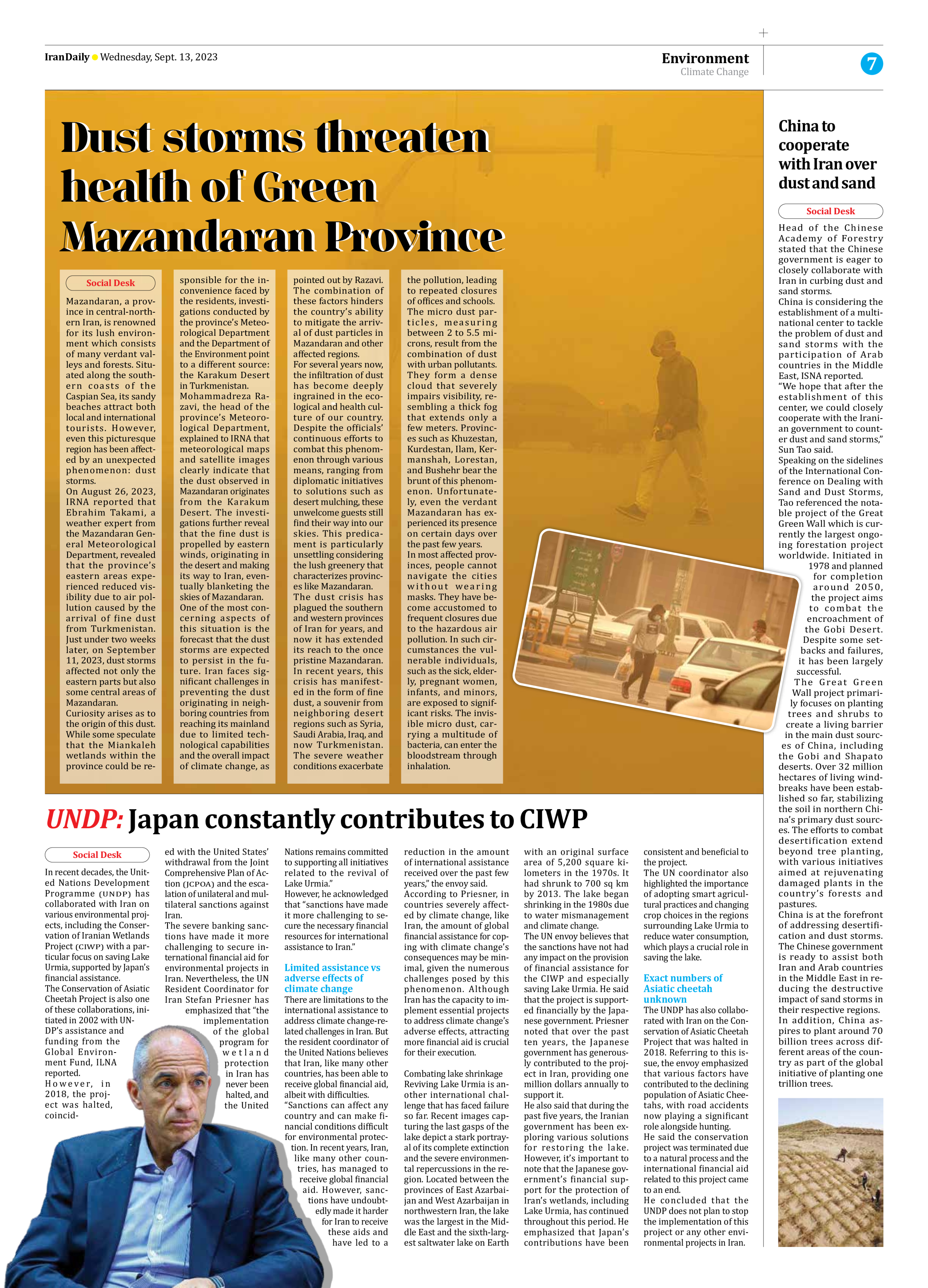
Dust storms threaten health of Green Mazandaran Province
Mazandaran, a province in central-northern Iran, is renowned for its lush environment which consists of many verdant valleys and forests. Situated along the southern coasts of the Caspian Sea, its sandy beaches attract both local and international tourists. However, even this picturesque region has been affected by an unexpected phenomenon: dust storms.
On August 26, 2023, IRNA reported that Ebrahim Takami, a weather expert from the Mazandaran General Meteorological Department, revealed that the province’s eastern areas experienced reduced visibility due to air pollution caused by the arrival of fine dust from Turkmenistan. Just under two weeks later, on September 11, 2023, dust storms affected not only the eastern parts but also some central areas of Mazandaran.
Curiosity arises as to the origin of this dust. While some speculate that the Miankaleh wetlands within the province could be responsible for the inconvenience faced by the residents, investigations conducted by the province’s Meteorological Department and the Department of the Environment point to a different source: the Karakum Desert in Turkmenistan.
Mohammadreza Razavi, the head of the province’s Meteorological Department, explained to IRNA that meteorological maps and satellite images clearly indicate that the dust observed in Mazandaran originates from the Karakum Desert. The investigations further reveal that the fine dust is propelled by eastern winds, originating in the desert and making its way to Iran, eventually blanketing the skies of Mazandaran.
One of the most concerning aspects of this situation is the forecast that the dust storms are expected to persist in the future. Iran faces significant challenges in preventing the dust originating in neighboring countries from reaching its mainland due to limited technological capabilities and the overall impact of climate change, as pointed out by Razavi. The combination of these factors hinders the country’s ability to mitigate the arrival of dust particles in Mazandaran and other affected regions.
For several years now, the infiltration of dust has become deeply ingrained in the ecological and health culture of our country. Despite the officials’ continuous efforts to combat this phenomenon through various means, ranging from diplomatic initiatives to solutions such as desert mulching, these unwelcome guests still find their way into our skies. This predicament is particularly unsettling considering the lush greenery that characterizes provinces like Mazandaran.
The dust crisis has plagued the southern and western provinces of Iran for years, and now it has extended its reach to the once pristine Mazandaran. In recent years, this crisis has manifested in the form of fine dust, a souvenir from neighboring desert regions such as Syria, Saudi Arabia, Iraq, and now Turkmenistan. The severe weather conditions exacerbate the pollution, leading to repeated closures of offices and schools.
The micro dust particles, measuring between 2 to 5.5 microns, result from the combination of dust with urban pollutants. They form a dense cloud that severely impairs visibility, resembling a thick fog that extends only a few meters. Provinces such as Khuzestan, Kurdestan, Ilam, Kermanshah, Lorestan, and Bushehr bear the brunt of this phenomenon. Unfortunately, even the verdant Mazandaran has experienced its presence on certain days over the past few years.
In most affected provinces, people cannot navigate the cities without wearing masks. They have become accustomed to frequent closures due to the hazardous air pollution. In such circumstances the vulnerable individuals, such as the sick, elderly, pregnant women, infants, and minors, are exposed to significant risks. The invisible micro dust, carrying a multitude of bacteria, can enter the bloodstream through inhalation.







